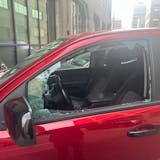(First of five parts in this Final Four week on Minnesota basketball)
The Minneapolis Lakers arrived on the Twin Cities sports scene in the fall of 1947 and spoiled the locals by winning six championships in the next seven seasons: the first in the National Basketball League in 1948, followed by five in the NBA or its predecessor, the Basketball Association of America.
George Mikan, the game's dominant player, retired after the sixth title in 1954. He came back briefly a couple of years later, but hard times on the court had ensued and soon ownership changed, with Bob Short heading a group that purchased the franchise.
The NBA was an eight-team league in 1957-58, and the Lakers, old and slow, finished 19-53 – the worst record by 14 games. In addition to a losing team, the Lakers still were dealing with a poor arena situation:
The Gophers would not allow the use of Williams Arena. The Minneapolis Auditorium, the preferred location, was often tied up with other events and the Lakers would find themselves in the Armory, a third-rate facility at the time. They also would play in St. Paul, and even had their first playoff game in 1959 at Hamline's historic but small gymnasium (the Norton Fieldhouse, now Hutton Arena).
As Short and the Lakers contemplated a bleak future in March 1958, Elgin Baylor, a 6-foot-5 forward, was leading the Chieftains of Seattle University to the NCAA title game. Kentucky defeated Seattle 84-72 in Louisville, yet Baylor was voted as the outstanding player in the Final Four.
Eligin was a junior at Seattle and eligible for the NBA draft. He was an easy No. 1 overall choice for the woebegone Lakers – as long as Short could sign him.
Short went to visit Elgin's family in Washington, D.C. and offered a $20,000 contract, a princely sum for that time. "If he had turned me down, I would have been out of business,'' Short said years later.


